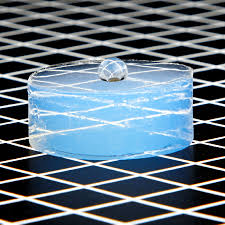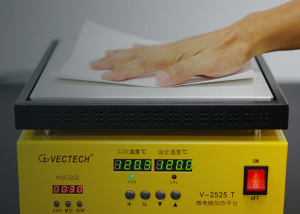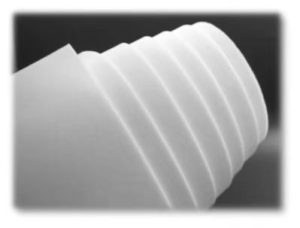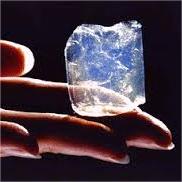Professional industry ceramic supplier, silicon nitride, silicon carbide, aluminum nitride and any other kinds of ceramics.
PRODUCT PARAMETERS
Description
Overview of Lowest silica aerogel 3mm fabric silica fabric 1100 temperature
Lowest silica aerogel 3mm fabric silica fabric 1100 temperature is a synthetic porous ultralight material derived from a gel, in which the liquid component has been replaced with a gas. The result is a solid with extremely low density and low thermal conductivity, often nicknamed “frozen smoke.” Despite its fragile appearance, it can be engineered to be remarkably strong, holding the title of the world’s best insulating solid material.
Features of Lowest silica aerogel 3mm fabric silica fabric 1100 temperature
-
World’s Lowest Thermal Conductivity: Provides unparalleled insulation performance, far superior to traditional materials.
-
Extremely Low Density: One of the lightest solid materials known to man, with a composition of up to 99.8% air.
-
High Surface Area: Possesses an incredibly large internal surface area, making it valuable for filtration and absorption applications.
-
Versatile Composition: Can be made from various materials, including silica, carbon, and metal oxides, each with unique properties.
-
Exceptional Porosity: Its nanoporous structure is responsible for its outstanding insulating capabilities.
Specifications of Lowest silica aerogel 3mm fabric silica fabric 1100 temperature
This fabric uses the lowest silica aerogel insulation available. It measures just 3mm thick. Despite its thin profile, it handles extreme heat incredibly well. This material withstands temperatures up to 1100 degrees Celsius continuously. That’s a very high rating for such a thin insulator.
The core is pure silica fabric. High-purity silica fibers form a strong, flexible base. Aerogel particles are embedded directly within this fabric structure. This integration creates a robust composite material. The aerogel provides exceptional thermal blocking power. The fabric carrier gives it strength and durability.
You get outstanding heat protection from this thin sheet. It stops heat transfer very effectively. This means surfaces stay much cooler on the opposite side. Workers near hot equipment gain important safety benefits. Energy loss reduces significantly too. Processes needing temperature control become more efficient.
The physical properties are impressive. The 3mm thickness allows use in tight spaces. Older, bulky insulation often can’t fit there. This material bends and flexes easily. It conforms well to pipes, ducts, and complex equipment shapes. It resists tearing and abrasion during handling and installation. The fabric releases minimal dust or particles. This keeps work areas cleaner and safer.
Performance stays consistent over time. The silica base resists degradation from high heat exposure. The aerogel particles stay locked within the fabric matrix. They don’t settle or shift significantly. The material maintains its low thermal conductivity long-term. It doesn’t easily absorb moisture from the air either. This prevents performance loss in humid conditions.
This aerogel fabric suits demanding industrial applications. Use it for furnace linings, kiln door seals, and high-temperature pipe insulation. It protects sensitive components in power generation equipment. The aerospace sector uses similar materials for thermal barriers. Anywhere extreme heat meets space constraints, this 3mm solution offers a reliable answer. Its combination of thinness and extreme temperature rating is hard to match.
Applications of Lowest silica aerogel 3mm fabric silica fabric 1100 temperature
This 3mm silica aerogel fabric handles extreme heat up to 1100°C. Its unique structure traps air. This air trapping creates outstanding thermal insulation. The fabric stays remarkably thin. This thinness matters. It allows use where bulky insulation fails. Space is often limited in hot areas.
Industries need this material. Furnace and kiln sealing benefits greatly. The fabric seals gaps effectively. It prevents dangerous heat escape. Worker safety improves. Energy costs decrease. The fabric withstands direct flame contact. Fire barrier applications are ideal. It protects sensitive equipment. Critical structures gain extra time during fires.
High-temperature pipe and duct work demands insulation. This aerogel fabric wraps pipes easily. It maintains flexibility after installation. Heat loss reduces significantly. Surface temperatures lower dramatically. Burn risks for personnel decrease. Process efficiency often increases.
Power generation plants operate at high temperatures. Turbines and exhaust systems get very hot. This fabric insulates these components reliably. Consistent performance is key. Downtime caused by heat damage lessens. The material resists harsh chemicals. Plant environments are often corrosive.
Laboratories use high-temperature equipment. Ovens, autoclaves, reactors need sealing. The fabric provides a tight thermal seal. Experimental accuracy improves. Energy consumption for heating drops. Flexible installation suits complex shapes.
Aerospace applications face extreme conditions. Aircraft engines generate intense heat. This fabric insulates engine compartments effectively. Weight savings are crucial. The thin, lightweight fabric helps. Fire protection standards are met reliably. Passenger safety is paramount.
The fabric handles thermal cycling well. Repeated heating and cooling cause no damage. Long-term performance remains stable. Material integrity lasts. Maintenance needs reduce. Replacement frequency lowers. This saves money over time.
It serves as protective clothing components. Firefighters need advanced heat barriers. The fabric adds crucial protection layers. Heat stress decreases. Burn injuries become less likely. Mobility stays high due to thinness. Rescue operations proceed more safely. Industrial workers near furnaces benefit similarly.
Company Profile
Tanki New Materials Co.Ltd. focus on the research and development, production and sales of ceramic products, serving the electronics, ceramics, chemical and other industries. Since its establishment in 2015, the company has been committed to providing customers with the best products and services, and has become a leader in the industry through continuous technological innovation and strict quality management.
Our products includes but not limited to Aerogel, Aluminum Nitride, Aluminum Oxide, Boron Carbide, Boron Nitride, Ceramic Crucible, Ceramic Fiber, Quartz Product, Refractory Material, Silicon Carbide, Silicon Nitride, ect. please feel free to contact us.

Payment Methods
T/T, Western Union, Paypal, Credit Card etc.
Shipment Methods
By air, by sea, by express, as customers request.
5 FAQs of Lowest silica aerogel 3mm fabric silica fabric 1100 temperature
FAQs: 3mm Silica Aerogel Fabric (1100°C Max)
What’s the highest temperature this fabric handles?
This fabric withstands temperatures up to 1100 degrees Celsius. This is its maximum continuous use temperature. Exceeding 1100°C damages the material. It loses its insulating power. The fabric might become brittle. Always respect the 1100°C limit.
Is the fabric fragile?
The fabric feels flexible for handling. You can cut it, shape it. It bends easily around pipes or equipment. Handle it with reasonable care. Avoid excessive force. Avoid sharp impacts. The aerogel particles inside are delicate. Rough treatment can crush them. Crushed particles reduce insulation performance.
Where do people use this fabric?
Its main job is extreme heat insulation. It protects workers near hot equipment. It insulates pipes, boilers, furnaces operating very hot. It shields sensitive electronics from heat sources. It fits well in tight spaces. Its thin profile helps. It’s common in industrial settings, power plants, foundries. It’s used in fire protection layers sometimes.
Is this fabric safe to touch?
The fabric itself is safe. The silica aerogel inside is non-toxic. Handle the cut edges carefully. Fibers might be loose. These fibers can irritate skin. Wear gloves during installation. Wear safety glasses. Avoid breathing in dust when cutting. Work in a ventilated area. Clean up dust promptly.
Why choose 3mm thickness?
Three millimeters offers excellent insulation in a very thin layer. This is a key advantage. Thinness saves space. It allows fitting insulation into cramped areas. It wraps neatly around complex shapes. It adds minimal bulk. Thicker versions exist for higher insulation needs. Three millimeters balances performance and space savings well. It suits many demanding applications.
REQUEST A QUOTE
RELATED PRODUCTS

Aerogel Board Insulation Board Best s Waterproof Silica Aerogel Thermal Insulation

Super insulated hydrophobicity aerogel blanket/film

Fireproof nano aerogel silicate insulating blanket low thermal conductivity aerogel felt for Wall Building Insulation

fireproof silver foil bubble spray insulation nanocrystalline aerogels bubble foil material

10mm Exterior Decorative Panel Fiber Cement Boards AEROGEL sandwich panel for Building Material



